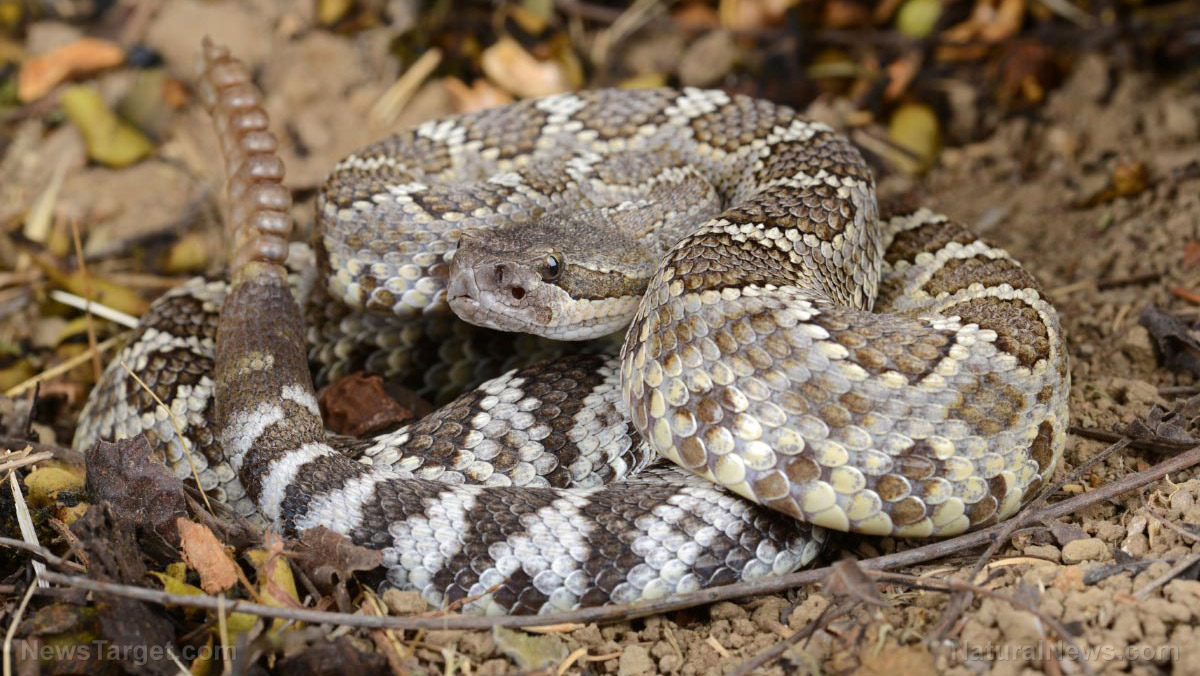Discovery of two new mammal species from the Jurassic period could reveal how humans got ears, scientists say
04/08/2024 / By Kevin Hughes

Scientists have discovered two new species of early mammals from the Jurassic period, and the findings could uncover the secret of how humans got their ears.
Two recent papers in the journal Nature indicate that the two fossilized specimens look like modern weasels and are a species of prehistoric mammalian animals. Paleontologists hope these new discoveries could provide a better understanding of how the mammalian middle ear evolved from the joints of the jaw millions of years ago.
One of the new mammals discovered is from the Shuotheriidae genus. It comes from the Middle Jurassic period from 174.1 to 161.5 million years ago. It was discovered in a fossil site in Mongolia and has been given the scientific name Feredocodon chowi. (Related: Giant flying insect discovered at Arkansas Walmart actually from the Jurassic era.)
The other new discovered species comes from the Morganucodon genus and was given the scientific name Dianoconodon youngi. Believed to be from the Early Jurassic period from 201.3 to 174 million years ago, it was discovered in the Heiguopeng locality in the Lufeng Formation in Yunnan Province in Southwestern China.
Both species found to have special characteristics in their jaws and ears
Both of these species had been found to have special characteristics in their jaws and ears, which suggest that they were benchmarks in evolution as the jaw joint was gradually evolving toward being particularized for use in hearing.
“The significance of this discovery is that both species have mandibular middle ears, and the Morganucodontan-like species have new postdentary bone structures,” said study author Patricia Vickers-Rich from the School of Earth, Atmosphere and Environment in Monash University in Melbourne, Australia. “This species is losing the load-bearing function of its articular-quadrate joint, whereas the shuotheriid species is showing characteristics suited for purely auditory function.”
The Dianoconodon youngi fossil’s jaw joints seem to have lost their load-bearing ability, while its mandibular inner ear appears to be better adapted for hearing. Meanwhile, the jaw joints of the Feredocodon chowi specimen looked even more like it was specialized for hearing.
These recent species are thus representative of the middle period between the jaw joint being utilized for eating and for hearing, granting paleontologists a greater insight into how human ears came to be the way they are today.
“Studying transitional stages in evolutionary history is crucial. The fossils show incremental modifications that demonstrate the complex process of adaptation that resulted in the advanced hearing systems found in modern animals,” Vickers-Rich said.
“Our study questions current theories and offers a new viewpoint on the evolutionary history of mammaliaforms. We provide vital insights into the phylogenetic relationships and evolutionary trajectories of shuotheriids, little known until recent discoveries in China, by explaining the intricate tooth shapes and occlusal patterns,” Vickers-Rich added.
According to co-author Dr. Thomas Rich of Museums Victoria Research Institute the newly recognized well-preserved fossils from the Jurassic of China essentially explain how one of the most extraordinary transitions in the history of the vertebrates happened specifically the transformation of several of the numerous bones in the lower jaws of reptiles that became tiny bones in the middle ears of mammals.
The research team stresses that these discoveries are significant advancements in mankind’s understanding of mammalian evolution.
Researchers aim to obtain greater knowledge of the complex processes that affected the development of hearing in early animals when more fossil evidence is discovered through continuing fieldwork and investigative research.
Follow Discoveries.news for more stories about recent scientific findings.
Watch the video below to know more about how the human begin.
This video is from the Kim Osbøl – Copenhagen Denmark channel on Brighteon.com.
More related articles:
Experts discover “terror beast” fossils in Greenland that are over half a BILLION years old.
A jaw-dropping find: High schooler from Iowa discovers a prehistoric mastodon jaw bone.
Experts think there are more GIGANTIC ANIMALS on Earth yet to be discovered.
Construction site turned dinosaur dig: Workers unearth 68-million-year-old Triceratops fossil.
Sources include:
Submit a correction >>
Tagged Under:
animal science, Archaeology, artifacts, breakthroughs, Dianoconodon youngi, discoveries, Ecology, environment, Evolution, Feredocodon chowi, fossils, Jurassic period, mammals, paleontology, real investigations, research
This article may contain statements that reflect the opinion of the author




















